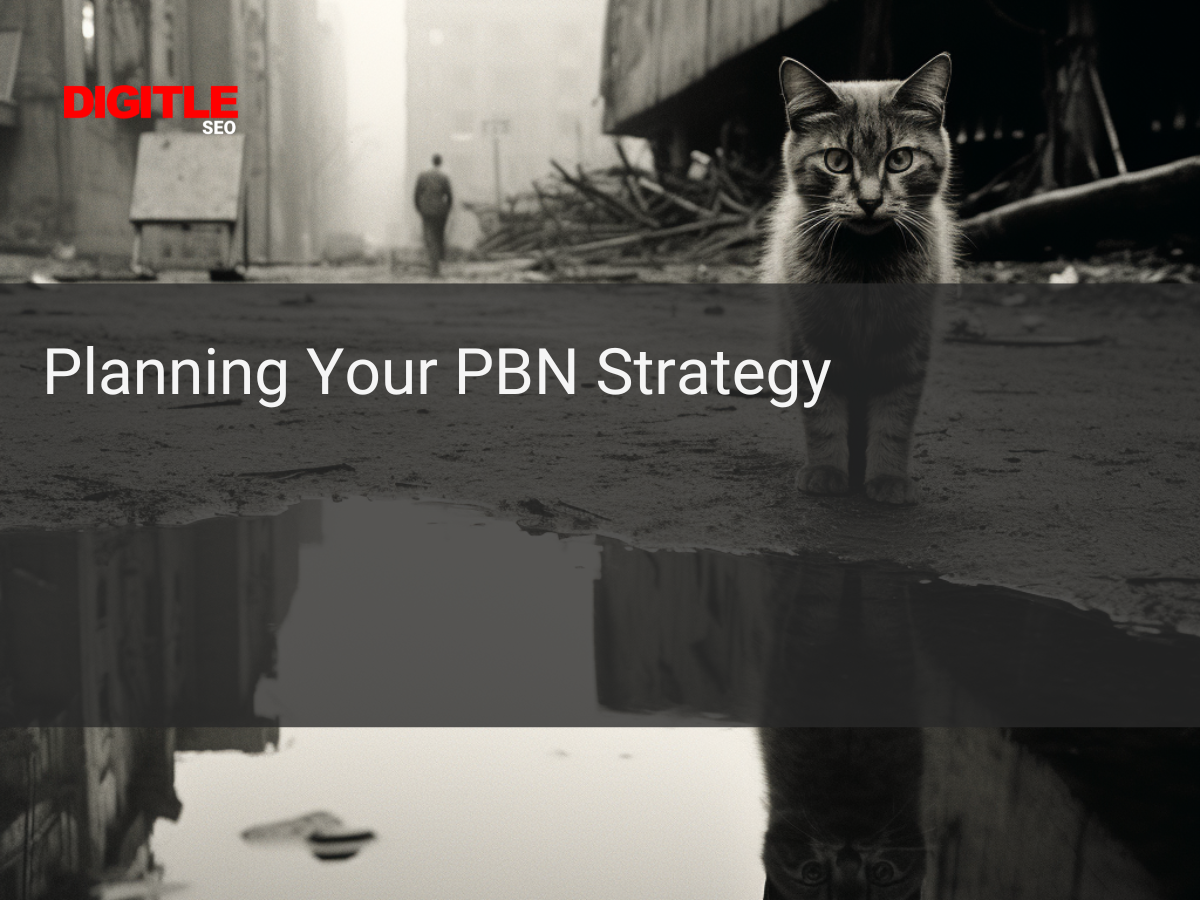How Many Links Does My Website Need?
Unraveling the Mystery: How Many Links Does My Website Actually Need?
How Many Links Does My Website Need?
You've probably asked yourself, "How many links does my website need?" The answer isn't as straightforward as you might hope. It's not about reaching a specific number of links, but rather about creating quality content that naturally attracts backlinks from reputable sources. In the world of SEO, it's always quality over quantity. So buckle up and let’s dive deep into understanding the importance and optimal number of links for your website!
Understanding the Importance of Backlinks
Backlinks play a significant role in SEO. They serve as trust signals to search engines, helping your website gain visibility and improve its ranking. Here's why they're vital:
- Credibility: Sites linking back to you are like votes of confidence. The more you have from reputable sources, the better.
- Visibility: Backlinks help search engines find and index your content faster.
- Traffic Boost: More backlinks often lead to an increase in referral traffic.
Below is a simple table illustrating how different types of links can impact your site:
| Link Type | Impact |
|---|---|
| High-Quality Links | Increase brand credibility & website authority |
| Low-Quality Links | Can harm reputation and lower rankings |
Remember these key numbers when working with backlinks:
1. A good aim would be around 10 quality backlinks for newer websites.
2. For established sites looking to grow further, aim for at least 100 high-quality links per month.
But it's not just about quantity; it's about quality too! Prioritize getting links from authoritative, relevant websites over numerous low-quality ones.
Determining the Optimal Number of Links for Your Website
Knowing how many links your website needs isn't an exact science. Numerous factors come into play. Here's what to consider:
- Competition: Look at successful sites in your niche. If they have thousands of backlinks, you'll probably need a similar number.
- Quality over Quantity: Not all links are created equal. A handful of high-quality, relevant backlinks can be more beneficial than hundreds of low-quality ones.
Here's a simple step-by-step guide on determining the optimal number of links:
- Analyze Competitor Websites: Use SEO tools like SEMRush or Ahrefs to check out how many and what type of backlinks competitors have.
- Evaluate Link Quality: Assess whether these are high-quality (from reputable sites) or lower quality (forum posts, comment sections).
- Create a Balance: Aim for a mixture between quantity and quality – remember that some search engines may penalize 'over-optimized' websites with too many low-grade backlinks.
- Monitor Performance: Keep track on how your website performs as you increase the number and improve the quality of your backlinks.
Remember! There is no magic number - it’s about balance and constant adjustment according to trends in your industry sector.
To simplify, here’s an illustrative table:
| Steps | Action |
|---|---|
| 1 | Analyze competitor websites’ link profiles |
| 2 | Determine link quality; prioritize relevance & authority |
| 3 | Find balance between quantity & quality |
| 4 | Continuously monitor performance & adjust accordingly |
In conclusion, there's no one-size-fits-all answer when it comes to deciding how many links you should aim for but by analyzing competitors and focusing on link quality this will provide invaluable insight toward shaping your own linking strategy.
Factors to Consider When Building Links
When it comes to building links for your website, you can't just aimlessly start. There are important factors that need careful consideration:
- Quality over Quantity: It's not about how many links, but where they're from. A few high-quality backlinks can have a more positive impact than numerous low-quality ones.
- Relevancy: The linking site should be relevant to your content or industry. Irrelevant links might not contribute positively towards SEO rankings.
- Diversity: Make sure the backlinks come from different types of websites (blogs, news sites, forums etc.). This helps in creating a natural link profile.
Following is an overview of these factors:
| Factor | Description |
|---|---|
| 1. | | Quality over Quantity | High-quality backlinks are more beneficial than low-quality ones. |
| 2. | | Relevancy | Backlinks should be relevant to your content/industry. |
| 3. | | Diversity | Backlinks from varied sources help create a natural link profile. |
Remember:
- Don't indulge in black-hat SEO practices like buying links; this could lead Google penalizing your website.
- Engage with bloggers/influencers within your industry who could potentially provide quality and relevant backlink opportunities.
- Regularly check on the health of your existing backlinks using various tools available online.
These guidelines will ensure that you build a strong and effective link strategy for optimum SEO performance!
Evaluating the Quality of Backlinks
Evaluating the quality of backlinks is more important than counting how many you have. Here's what to consider:
- Relevance: The linking site should be related to your industry or niche.
- Authority: High domain authority sites provide stronger backlinks.
- Traffic: Sites with high traffic volumes can lead more visitors to your website.
Check for these indicators:
- Anchor text: This helps search engines understand what your page is about.
- Link location: Links in the body content are typically more valuable than those found in footers or sidebars.
- Dofollow vs Nofollow: Dofollow links pass on ranking power, while nofollow links do not.
Here's a quick reference table showing good versus poor quality backlink attributes:
| Good Quality Attributes | Poor Quality Attributes |
|---|---|
| Relevant context | Irrelevant context |
| Natural anchor text | Over-optimized anchor text |
| Dofollow link | Nofollow link |
Remember that building high-quality backlinks takes time and effort, but it's worth it for improving SEO rankings and driving organic traffic to your site.
Link Building Strategies for Improving SEO
Link building is critical to enhancing your website's visibility on search engines. Here are some effective strategies you can use:
- Guest Blogging: Reach out to bloggers in your niche and offer high-quality content in exchange for a backlink.
- Broken Link Building: Find broken links on relevant websites and suggest they replace the link with one of yours.
- Social Media Sharing: Share your content on social media platforms, encouraging followers to link back to it.
- Infographics Submission: Create compelling infographics that others will want to share, providing a valuable backlink source.
A Few Useful Tools For Your Link-Building Strategy:
| Tool | Purpose |
|---|---|
| Majestic SEO | To analyze the quality of backlinks |
| Buzzsumo | To identify influencers within your industry |
| SEMRush | To get insights about competitor's link-building strategy |
Remember these key points while implementing these strategies:
- Prioritize quality over quantity: One high-quality link from a reputable site is worth more than several low-quality links.
- Relevancy matters: Links from sites related to your industry carry more weightage.
- Diversify anchor text: Using varied but relevant anchor text looks natural and avoids penalties.
- Monitor & revise: Keep track of results using analytics tools like Google Analytics or Moz Pro, then refine as necessary.
By implementing the above strategies correctly, you'll significantly increase the likelihood of improving your site’s rankings!
Common Mistakes to Avoid in Link Building
In the quest for website optimization, link building is a crucial step. However, there are pitfalls to avoid. Here are some of the most common mistakes made during this process:
- Buying Links: This is not just frowned upon; it's against Google’s guidelines. It can lead to penalization and a severe drop in ranking.
- Unrelated Links: Ensure that all links on your site align with its content and purpose.
- Quantity Over Quality: One high-quality backlink from a reputable source can have much more impact than numerous low-quality ones.
Avoid these blunders for efficient link-building:
| Mistake | Consequence |
|---|---|
| Rapid acquisition of links | Triggers spam alerts |
| Low relevancy anchor text | Reduces credibility |
Here are steps number wise to ensure mistake-free link building:
- Always prioritize high-authority sites when seeking backlinks.
- Regularly audit your site's outbound and inbound links.
- Stick strictly to white-hat SEO strategies.
Remember, effective link building takes time but pays off with increased traffic and higher search engine rankings!
Monitoring and Adjusting Your Link Strategy
Keeping an eye on your link strategy is crucial. It helps you stay flexible, adapt to changes, and maintain the performance of your website. Here are some steps for effective monitoring:
1. Track Backlinks: Keep a close watch on who's linking back to your site.
- Use tools like Google Search Console or Ahrefs
2. Check Link Quality: All links are not created equal.
- High-quality links come from reputable sites
- Avoid low-quality spammy sites
Table 1: Tools for Monitoring Links
| Tool | Features |
|---|---|
| Google Search Console | Free tool from Google that gives insights into how it sees your website |
| Ahrefs | Paid tool that offers comprehensive analysis of backlinks |
Adjustments in the strategy become necessary when:
- The number of quality inbound links is decreasing
- You're receiving more links from spammy websites
Remember, SEO isn't a set-and-forget kind of thing; it needs constant attention and tweaking depending upon results!
Final Thoughts
Your website needs a healthy number of links, but remember, quality over quantity. It's not about getting the highest number of backlinks possible; it's all about securing high-quality ones that add value to your site and enhance user experience.
Stay proactive with your link-building strategies. Monitor your progress regularly and adjust as needed. Remember, SEO is an ongoing process - keep learning, experimenting and refining.




![Aged Domains Versus Expired Domains [What Is Better?]](https://lirp.cdn-website.com/7c941cf4/dms3rep/multi/opt/4-cde4d733-1920w.png)


